Slaughterhouse on Tierra del Fuego
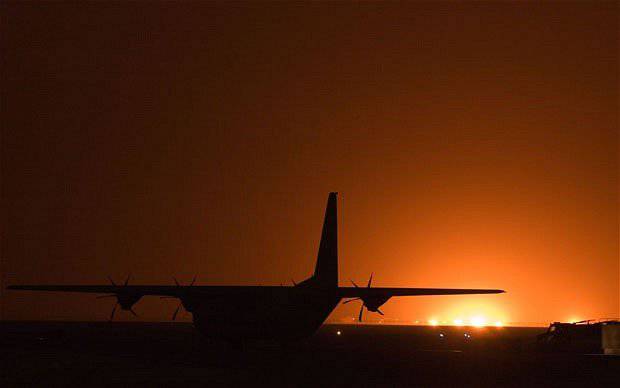
Ending. Start - http://topwar.ru/40403-linkor-v-folklendskoy-voyne-mechty-o-proshlom.html
New day - and a new sacrifice. No, he can't just sit there and watch his ships die. It is necessary to take special measures to protect the squadron.
The main threat to the British was the Dassault-Breguet Super Étendard - French-made supersonic aircraft carrying Exoset anti-ship missiles. The Franco-Argentine contract worth $ 160 million provided for the supply of 14 fighter bombers to Argentina, along with lots of 28 anti-ship missiles. The contract was concluded in September 1979 - by the spring of 1982 for the arsenal of the naval aviation Argentina managed to do 6 such aircraft. The number of missiles delivered remained unknown. However, the very first meeting with Exocet shocked the British - on May 4, 1982, an unexploded rocket burned down the latest Sheffield destroyer.
Not less troubles delivered sea attack aircraft A-4 "Skyhawk". Light subsonic machines that have a huge combat radius of action (due to the presence of an air refueling system). They boldly flew into the open ocean and tormented the squadron of Her Majesty with a hail of free-falling bombs.
Finally, the Daggers - used Nesher (Mirage-5) from the Israeli Air Force. The absence of the radar was compensated by a solid combat load and supersonic flight speed - the meeting with the Dagger did not bode well for the ships of Her Majesty.
Despite the presence of an air defense missile system, barreled anti-aircraft artillery and deck fighters, the British squadron was unable to defend itself against air attacks. Over 20 ships hit by missile and bomb strikes (many - repeatedly). Such a regrettable situation is a direct consequence of the weakness of the British anti-aircraft weapons. After the war, it turns out that the main British air defense system "CiKat" spent 80 missiles, but never hit the enemy - the outdated subsonic Zura just did not have time to catch up with the Argentine attack aircraft!
But it turns out later ...
In the meantime, Admiral Woodward and his officers intensely discussed the situation. The squadron perishes under blows of the opponent. It is necessary to take urgent measures.
Royal the fleet there is nothing to oppose the Argentinean pilots in the air. But what if you attack planes when they are on the ground?
The combat core of Argentine aviation was based in Rio Grande - a distant air base on Tierra del Fuego, which turned out to be the nearest base to the place of conflict. "Total" in 700 km to the Falkland Islands. It is not surprising that after such a flight, the average time spent by the Dagger in the combat zone did not exceed two minutes. Switching afterburner or air combat with British Sea Harriers meant falling with empty tanks into the ocean. The Skyhawk pilots were easier due to the presence of an in-flight refueling system, but the situation was complicated by the lack of the required number of flying tankers. The Argentine Air Force had only one (!) Acting KS-130.
Other Argentinean air bases were located even further: Rio Galeros and San Julián (about 800 km), Comodoro Rivadavia (900 km), Trelew (1100 km - only Canberra could operate from there). The runway at Port Stanley (Falkland) airfield was too short for the jet Daggers and Skyhawks. Ground airfields on about. Pebble and Goose Green were also unsuitable for the basing of modern aviation.
So it all comes down to the Rio Grande! Having lost the base, Argentina will lose the opportunity to wage war.
In principle, to hell with it, with the base. The British were more concerned about the fate of the Super Etandards and the Exoset anti-ship missiles. Exploration reported that all the "Super-Etandara" and missiles are in Rio Grande. The same information was confirmed by the submariners - the newest fighter-bombers were repeatedly noticed taking off from a base on Tierra del Fuego. Such a threat was subject to immediate liquidation in order to prevent heavy losses of the fleet.
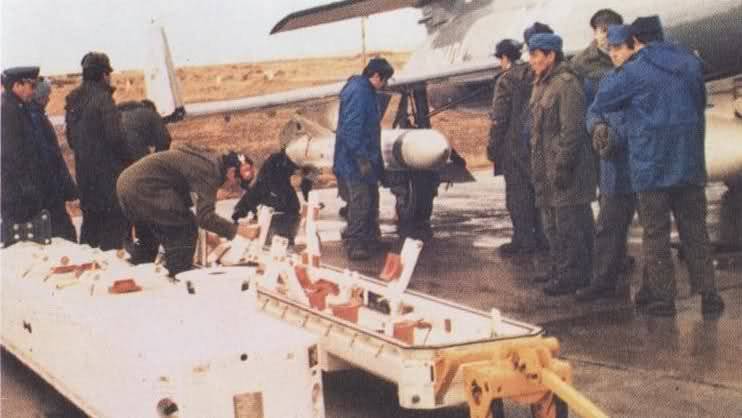
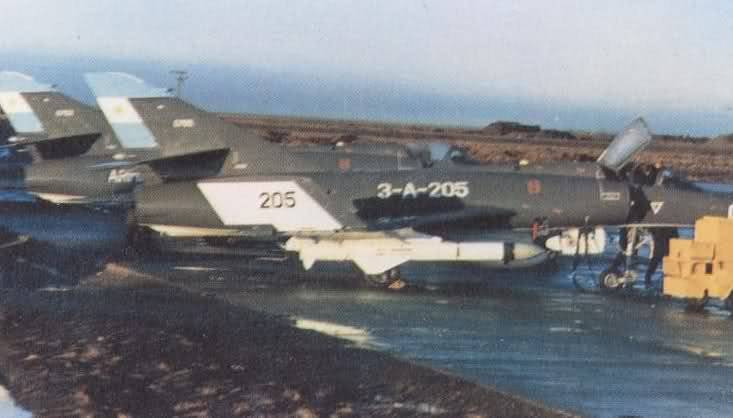
What means were available to Admiral Woodward for striking behind enemy lines?
Deck aircraft!
The aircraft carriers "Hermes" and "Invinsible" with four dozen VTVP family "Harrier". Alas, they had little chance of reaching the line of attack: the compound would be hit by enemy aircraft. Moreover, the only hit threatened to turn the ships into flaming ruins. Heavy losses are inevitable. The result is uncertain. Need to act differently.
Strategic aviation!
Bombers "Vulkan" and "Victor" (as air tankers) have repeatedly been involved in bombing Falklands. The result was modest: free-fall bombs could not cause significant damage to the airfield at Port Stanley.
In the case of the Rio Grande, they would have to fly another 700 km to the south, beyond the reasonable range for such old and imperfect vehicles. Of course, no one doubts the courage of the pilots of the Royal Air Force - but the flight through the entire combat zone, into the enemy’s lair, looked like a useless victim. A single slow bomber would inevitably be intercepted by enemy aircraft. Moreover, as already noted, the accuracy of the bombing was low - there is nothing even to hope for the targeted defeat of the sites with Super Etandars.
Admiral Woodward needed a powerful, destructive weapon capable of penetrating the camp into the enemy and eliminating the main threat with surgical precision - to blow up Super Etandar planes, find and destroy missiles, kill technicians and pilots. If possible, burn the fuel storage, destroy ammunition depots, paralyze the operation of the airbase.
Let the whole world see that shooting at the ships of Her Majesty is not cheap entertainment. Pay for such an act becomes your own life.
Admiral Woodward did not have any battleships with destructive 15 guns. There were no StratoFortress bombers, precision-guided munitions and cruise missiles. But there was a handful of desperate guys from Special Air Service (SAS). Living people will replace bombs and rockets.
The operation received the code designation "Mikado" - a direct allusion to the sacrificial resilience of Japanese kamikazes.
The battle
Predawn hour, 21 May 1982 of the year. Tierra del Fuego
... Diego yawned tiredly and rubbed his eyes - before the end of his shift there was less than an hour. Outside, the window was raining all night, turning the airfield of the airfield into a big muddy puddle. Who called this place Terra del Fuego? This is the real Terra del Agua! (Water land).
Suddenly, the operator's attention was attracted by two marks on the radar screen - at a distance of 25 miles from the coast two large slow moving objects appeared. The “friend-foe” defendant is fine, but they do not get in touch.
- Relax, amigo. These are our transport workers from the continent. They promised to arrive yesterday, but were delayed due to the weather.
And the landing lights of the aircraft are already swinging in the sky - two “Hercules” with identification marks of the Argentine Air Force are landing. Inside, on cramped seats along the sides, a man is sitting shoulder to shoulder - the squadron "B" of the 60 SAS regiment. The floor is littered with bales of ammunition and food. The explosives are carefully folded, the barrels of large-caliber machine guns stick out. The paint on the sides of Army Land Rovers dimly dims - it is a pity that the capacity of the Hercules did not allow us to take a couple of units of heavy armored vehicles with us.
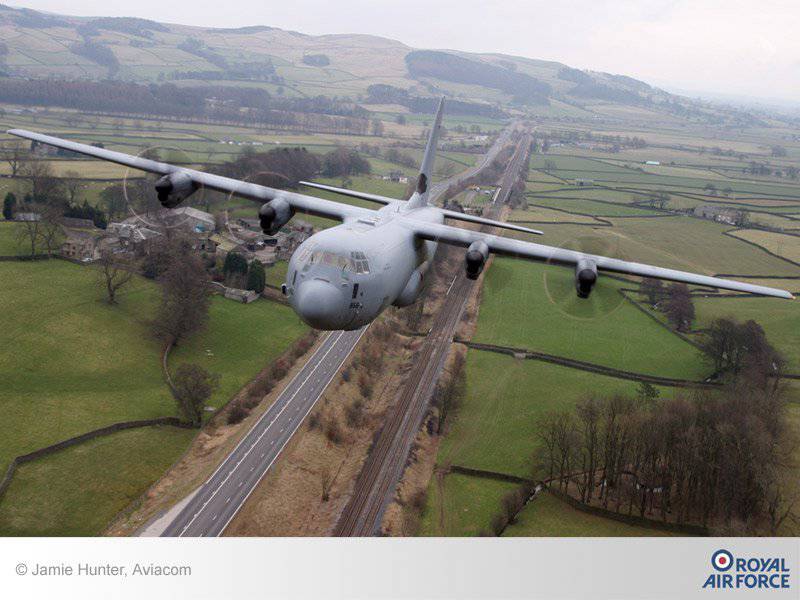
Hardly having extinguished the speed, the “Hercules” lower the ramp - the metal scratches the wet asphalt, lifting the spray line as a stern. Jeeps with paratroopers roll out from the womb of the Trojan horses, the sleeping Rio Grande is filled with a roar of shots.
Without waiting for the outcome, both “Hercules” increase engine speed and go for an emergency take-off - Argentine anti-aircraft guns are shooting at the back. One of the cars heavily heels and, enveloped in flames, falls in the vicinity of the airfield. The second transporter at full throttle and extremely low altitude goes west. Faster! Faster! To the border of all 50 kilometers. The hospitable radio beacons of Agua Fresca are already audible - the Chilean air base cordially receives "guests".
Senor Pinochet is always ready to do disgust to his "friend" Leopoldo Galtieri. The relationship between dictator Pinochet and the Argentine military junta was so bad that Argentina was forced to keep half the army on the border with its neighbor. In view of these events, the plan for the evacuation of the British soldiers looked unequivocal.
Having defeated the base, British special forces must pick up the wounded and "dump" on the territory of Chile.
Woodward, noticed how Commander Mike Clapp turned pale.
- Sixty sons of someone ... you send them to certain death!
- Commandos, at the cost of their lives, eliminate the deadly danger to our squadron. On the ships, too, serve someone's sons. Thousands of sailors. In the end, we should not forget why we are here - we must return the islands to the jurisdiction of the British Crown.
“Sir, this operation carries great risks.” We have only general ideas about Rio Grande and know almost nothing about the base security system. What is the size of the Argentine garrison on Tierra del Fuego? There is a great danger that the military transport “Hercules” may be detected and shot down prematurely - we may suffer heavy, and, moreover, senseless losses.
Suddenly, commander Peter Herbert, commander of the underwater forces of the squadron, rose from his position:
- There is another suggestion. Did you say that Rio Grande is located near the coast?
“Yes, the eastern edge of the runway is only a mile from the coast.”
“In that case, we can use a safer method of delivering special forces.”
- Onyx! - happily exhaled all those who attended the meeting.
Midnight, 21 May 1982.
Near the coast of Tierra del Fuego, the dark silhouette of HMS Onyx sways on the waves. Nearby on the water are seen several semi-rigid "Zodiacs" with SBS fighters. Launching the last boat with sea lions, the submarine quietly disappears into the depths. Small but armed to the teeth, the British landing force rushes to the shore.

At dawn, they will land on the coast, make a short forced march, and then, like a whirlwind, will rush into the territory of the Argentinean airbase. The only problem paratroopers will be the lack of vehicles, however, captured cars can be obtained from the enemy.
Having shot the personnel of the airbase and destroyed the planes, the surviving fighters must go to the West - towards the Chilean border ...
This was the final version of the Mikado plan.
As it was in reality
The preparatory part of Operation Mikado ended with a successful raid on the auxiliary airfield Calderon on Fr. Pebble - on the night of 15 in May, 1982. Forty-six SAS fighters landed from helicopters on an island occupied by Argentines, and in the morning they attacked the base, under the cover of the guns of the destroyer Glamorgan. Seeing the British special forces, the Argentine soldiers abandoned weapon and fled. According to British data, SAS managed to shoot one of the amigos. The British themselves suffered no losses. It is reliably known about the destruction of 11 airplanes of the Argentine Air Force: 6 light anti-guerrilla attack aircraft IA-58A "Pukara", 4 training and training T-34C "Turbo Mentor", as well as one light transport "Skyvena".
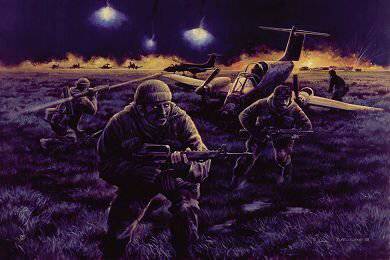
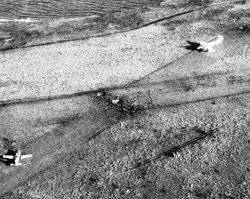
British special forces demonstrated their readiness to carry out a serious raid on the airfield behind enemy lines.
However, the first phase of the Mikado operation in real combat conditions ended in failure - on the night of 18 in May 1982, the SeaKing helicopter (w / z ZA290) attempted to land a group of 9 special forces in the vicinity of the Rio Grande airbase for reconnaissance and reconnaissance . However, the “spinner” is entangled in a thick fog. The commander of the special forces group, seeing how the navigator and the pilot lively argue about the location of the helicopter, decided to cancel the landing. The helicopter headed towards Chile. There, the crew tried to drown the helicopter in the cold waters of the Strait of Magellan, but the Sikorsky SeaKing turned out to be an unusually buoyant car - it was necessary to land the helicopter on one of the deserted beaches of Punta Arenas and destroy it with an explosive charge. The sufferers themselves were secretly smuggled into the territory of the British Embassy in Santiago.
The submarine "Onyx" - the only British diesel-electric submarines, which took part in the Falklands war. Due to its modest size, it was ideally suited for covert surveillance in the coastal zone and the landing of small groups of reconnaissance and saboteurs on the coast captured by the enemy. During one of the recent operations, Onyx flew onto stones and badly damaged the nose - so, however, she was able to return to the UK for repair.
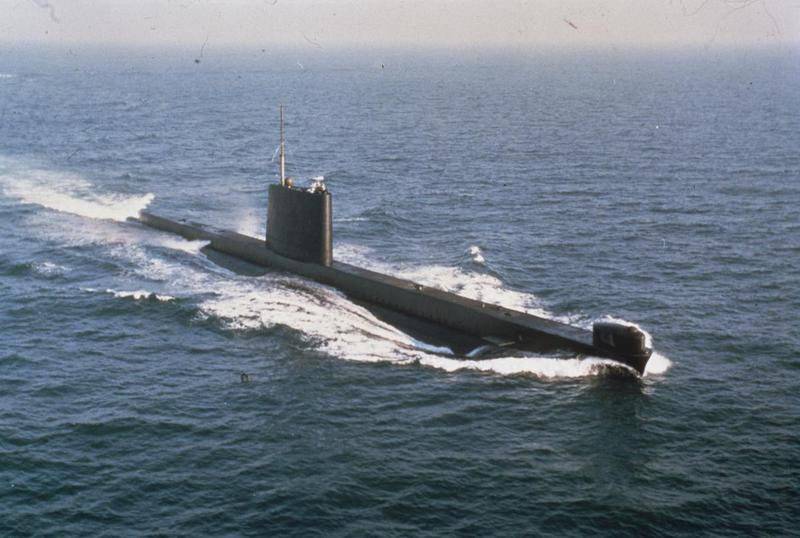
It was this submarine that was considered as the most priority vehicle capable of secretly penetrating to the very coast of Tierra del Fuego and disembarking a group of troops in accordance with the plan of Operation Mikado.
However, the British plans were not destined to become a reality.
As it turned out, fears at the expense of the RCC "Exochet" were exaggerated - foreign intelligence obtained information that at the time of the introduction of the embargo, Argentina managed to get only five combat-ready "Super Etandarov" and the same number of missiles. Another, the sixth, fighter-bomber did not have a full set of avionics and was used as a source of spare parts.
The last Exocset was used up by 30 in May during an unsuccessful attack on the British aircraft carrier grouping. The rocket was never able to reach the goal - according to one data, it was able to divert the course from the course with dipole reflectors. According to another version, the PKR shot down the destroyer HMS Exeter. Thus ended the Falkland triumph of the legendary French rocket. By the end of May, the British had already broken through to the islands and landed the main landing forces. The intensity of the Argentine air attacks decreased markedly - the losses in aircraft were affected. It became obvious to the British command: there is no need for a suicidal raid on Tierra del Fuego. The bloody operation "Mikado" has remained a terrible legend.
Argentina only learned about the raid it was preparing many years after the war. According to the statements of the Argentine side, the raiders would not be able to get away from the answer - the Argentine army continued its pursuit of SAS fighters in Chile.
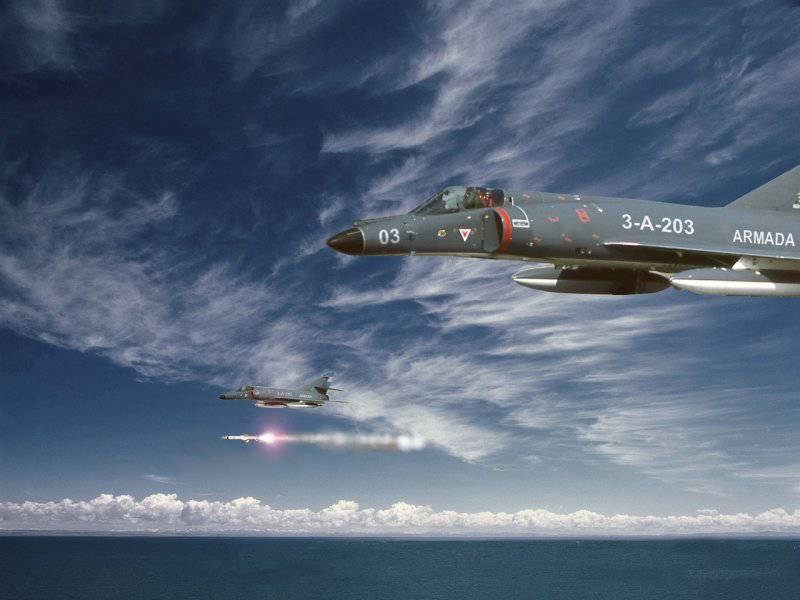
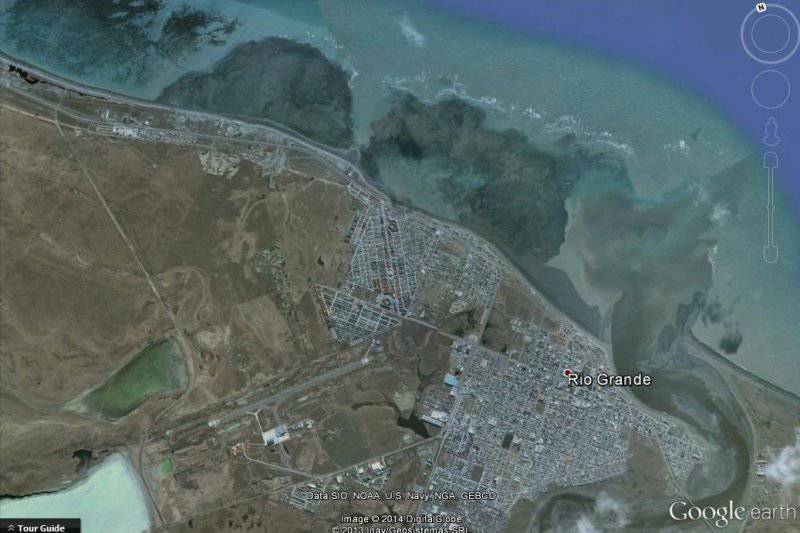
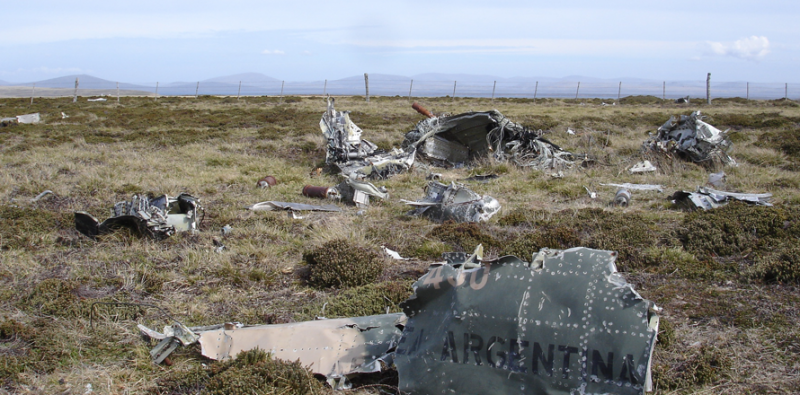
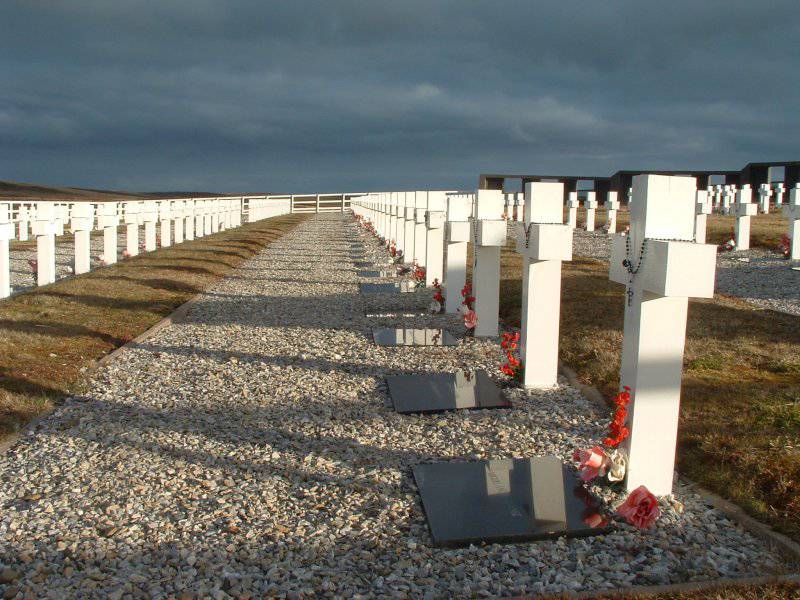
Information